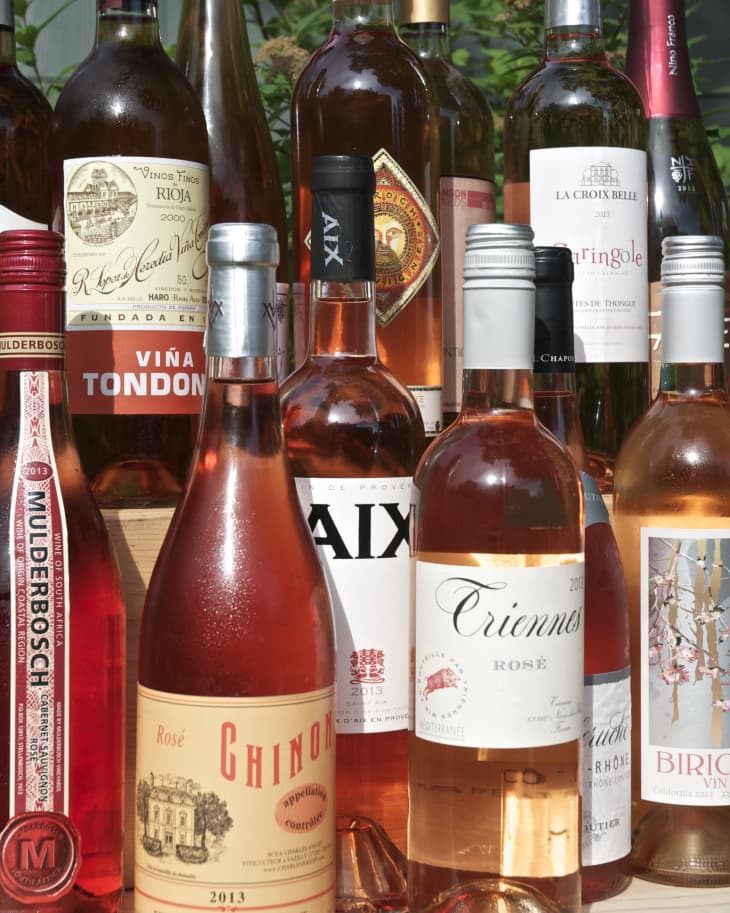Pink is the New White: Why (and How) to Drink More Rosé Wine This Summer
It’s summertime, and that means that it’s officially rosé season, a bright, sunny window of time where pink wines make their appearance. This seasonal specialty pops up around March and lingers well into the sweltering summer months. Rosé has rightfully earned its position as white wine’s summertime partner in crime: it is crisp, refreshing, and a versatile pairing for warm weather cuisine.
It is time to cross over to the paler side of red, if you haven’t done so already.
Rosé’s popularity has increased dramatically over the past ten years. Rosé’s production is no longer simply an afterthought; many winemakers are cultivating grapes specifically for rosé wines. In fact, multiple restaurants here in Denver boast separate wine lists devoted solely to pink wine. Rosé’s quality, quantity, and diversity is on the rise, and consumers and critics alike are taking notice.
How is Rosé Made?
At its most basic description, rosé is made from red grapes that see just a short time of skin contact during the fermentation process (anywhere from a couple of hours to a little over a day). Depending upon the length of maceration time the clear juice remains in contact with the dark skins, the color can range from a pale touch of blush to a brilliant, translucent ruby red.
The saignée method is also common and involves “bleeding off” a small portion of the juice during red wine production, resulting in a very concentrated version of rosé.
There are always exceptions to the general rule, however. Rosé can also be made by blending white wine with red wine (as in rosé Champagne production), or by a “whole cluster” pressing, but these methods are much less common.
What Does Rosé Taste Like?
The taste spectrum for rosé is ever growing in its range. Each year, more producers are making rosé from different grapes, in different growing areas around the world. The usual suspects include Grenache, Pinot Noir, Cinsault, Syrah, and Zinfandel.
In general, rosé tends to be fresh on the palate, with crisp acidity. Common flavors associated with rosé are ripe strawberry, watermelon, and raspberry. Often these notes are complemented with herbal aromas and mineral undertones. Rosé can be made either dry or sweet, and it is most often served chilled.
→ Does rosé get better with age? In general, rosé wine is meant to be consumed right away. Enjoy the current vintage with reckless abandon. After all, rosés will make their return again next spring, and you can enjoy them all over again!
My Summer Rosé Picks
- Red Car, Pinot Noir, Sonoma Coast, 2013, $25
- Triennes, Cinsault Blend, Provence, 2013, $15
- Elk Cove, Pinot Noir, Willamette Valley, 2013, $15
- J Vineyards Vin Gris, Pinot Noir, Russian River Valley, 2013, $17
- My Essential, Grenache blend, Provence, 2013, $15
- M. Chapoutier “Bellerouche”, Grenache blend, Côtes-du-Rhône, 2013, $12
- Mas de la Dame “Rosé du Mas”, Grenache blend, Provence, 2013, $14
- Zestos Rosado, Garnacha, Madrid, 2013, $10
- Le Vieux Pin “Vaïla”, Pinot Noir, Okanagan Valley, $25
→ If you are looking for a more robust style of rosé, try the world famous rosés from either Bandol or Tavel, France. And if you are up for a unique, out-there and geeky rosé experience, try rosés from either R. Lopez de Heredia of Rioja, Spain (their current release is over ten years old!) or Clos Cibonne’s Tibouren, Côtes de Provence, France.
What to Eat with Rosé
Think about both the weather and the cooking style of your food. Chilled rosé is thirst-quenching in the summer heat. White wine is a natural go-to during the summer, but sometimes the depth and tannic structure of a rosé pairs better with the season’s dishes than the typical aromas of apple and citrus, so commonly found in many white wines.
- Anything grilled – We generally reach for a bold red when grilling, especially when red meat is on the menu. Rosé offers up these same red grape varietals, while made in a much more refreshing, seasonally appropriate style.
- Mediterranean cuisine – The winemakers in Provence, the birthplace of rosé, originally made rosé as a way to enjoy their red wine grapes during the hot summer months. Rosé is the classic pairing for Mediterranean food.
- Mexican fare – This often tricky-to-pair cuisine is many times too spicy for red wine and too intense for white wine. Rosé can complement the rich, roasted ingredients and tomato sauces wonderfully.
